1Department of Botany, The University of Burdwan, West Bengal, India.
2Vice Chancellor, The University of Burdwan, West Bengal, India.
Corresponding author email: buruniv@gmail.com
Article Publishing History
Received: 14/10/2021
Accepted After Revision: 24/12/2021
Air pollution is a notable worldwide warning to human health. Every year, air pollution is accountable for more than five million death, out of these 91% occur in lower-middle-income countries. In addition to this, various respiratory & cardiovascular diseases, lower productivity and increased mortality are also related to air pollution, that’s why it’s often called a silent or invisible killer. However, Ecotourism generates opportunities for tourists wishing to enjoy the natural environment without destructing or disturbing its habitats. It is increasingly considered instrumental in helping the local socio-economic sustainable development and also as a means for generating revenues with the object of preserving the local traditional culture and craft. Environmental ambient quality must be considered as a crucial aspect in the predetermining process of prospective tourists and tourism destinations.
The present study site Baranti, in Raghunathpur subdivision of Purulia district, West Bengal, India is situated in a splendid location within Baranti Lake and Baranti Hill, both has emerged as a fast-grown ecotourism spot over the last 7-8 years. The present study was carried out through survey questionnaire method from May 2020 (01.05.2020) – November 2020 (30.11.2020) on different categories of respondents like local people, hotel-resort owners & staff, local businessmen and tourists and simultaneously during this period, the air quality was also measured in respect of temperature, humidity, PM 2.5, PM 10, particles and CO2 through Temtop M2000C Air Quality Monitor at the said site.
In the observation, ambient air quality was measured at three hours intervals on a day every week and 10 readings were taken from each site at a distance of 10 meters apart and the mean values were considered for statistical analyses. It was found that average PM 2.5, PM 10 & CO2 in ambient air in the study site were 64.26 ug/m3, 89.43 ug/m3 & 701.66 respectively therefore unexpectedly the ambient air is not only polluted but also moderate to unhealthy in respect of the said parameters as judged by the yardstick of Air Quality Guideline Levels laid down by the WHO. A well-defined management plan is required for controlling and minimising the said pollution with the interference of the Government and other agencies for the sustainable growth and development of the said ecotourism spot.
Air Pollution, Ambient Air, Ecotourism, Management Plan, Sustainable Development
Saha D, Keshri J.P, Saha N.C. Identifying Air Pollution As A Major Threat To Newly Grown Ecotourism Spot In Baranti, Purulia, West Bengal, India. Biosc.Biotech.Res.Comm. 2021;14(4).
Saha D, Keshri J.P, Saha N. C. Identifying Air Pollution as A Major Threat to Newly Grown Ecotourism Spot in Baranti, Purulia, West Bengal, India. Biosc.Biotech.Res.Comm. 2021;14(4). Available from: <a href=”https://bit.ly/3pyWPB4“>https://bit.ly/3pyWPB4</a>
Copyright © Saha et al., This is an open access article distributed under the terms of the Creative Commons Attribution License (CC-BY) https://creativecommns.org/licenses/by/4.0/, which permits unrestricted use distribution and reproduction in any medium, provide the original author and source are credited.
INTRODUCTION
Ecotourism fulfils the tourists’ wish for experiencing the natural environment, of course without causing any damage to it or causing any disturbance to its natural environment. It is a sort of tourism that includes a visit to natural areas that are comparatively undisturbed. It is often considered to be an alternative in miniature form to standard mass tourism conducted on a commercial basis. It may have manifold purposes like educating the travellers, providing funds for the conservation of ecology, boosting up economic development and making the local communities politically powerful, or nurturing different cultures (Acott et al. 1998; Fletcher et al. 2012; Nataraja et al. 2014; Chow et al. 2019; Ramyar et al. 2020).
From the year 1980s, environmentalists started considering ecotourism as a veritable prospect, for posterity may go to places that are comparatively out of human intervention. In this connection it may be mentioned that in China owing to air pollution domestic tourist arrivals in the neighboring cities have significantly reduced. Therefore, air pollution has negative effects on the tourism industry not only in the short run but in the long run (Dong et al. 2019; Striphas 2019; Tang et al. 2019; Zhou et al. 2019; Koondhar et al. 2020). In this context, it may further be said that air pollution is a formidable factor in determining human health.
It has been found in various studies that there is a close relationship between air pollution and its adverse impact on the health of the people at large. Contaminated air is considered one of the crucial components leading to many diseases such as cardiovascular, respiratory diseases such as asthma, bronchiolitis, Chronic Obstructive Pulmonary disease (COPD), lung cancer, central nervous system dysfunctions and cutaneous diseases. CO2, particles are mainly responsible for air pollution. The particles are named as PM categorised into 2.5 µm (PM 2.5) or 10 µm (PM 10) CO2 and particles are toxic for human health proved by epidemiological and toxicological studies (Koondhar et al. 2020).
Particulate air pollutants not only negatively affect human physical health but also mental health (WHO Regional Office for Europe 2013; Braithwaite et al. 2019; Payne-Sturges et al. 2019; Sun and Zhu 2019; Almetwally et al. 2020; Manisalidis et al. 2020; Yang et al. 2021). Since decades it is well known that Purulia, West Bengal, India as a place of natural magnificence, significantly consists of numerous magical places including Baranti hills and reservoir, Joychandi hills, Doldanga, Saheb bandh, Ayodhya hills, Gajaburu hills, Surulia and Murugama dam, Cheliama to indicate a few that are hotspots of interest. The places have charmed tourists who enjoy hill trekking, who ardently love rock-jock, who enjoy migrant bird watching, camping, historic sites and above all enjoying nature’s beauty. In the recent past, the tourist attraction was very limited due to so many causes (Yang et al. 2021).
However, recently many of these limitations have been controlled and they have marked the origination of the tourism industry. As an outcome, sustainable development and progress of the socio-economic condition of the local people have been begun. But air pollution may have a significant negative impact on tourist destinations of the location as well as on the economic condition of the local inhabitants (Bhaya and Chakrabarty 2016; Patra et al. 2018 2019; Churchill et al. 2020; Palit and Saren 2021).
The aims and objectives of the study are to collect first-hand information and acquire knowledge through surveys among respondents of different categories regarding a newly grown, fast-growing ecotourism spot namely Baranti, Purulia of West Bengal, India and study the air pollution that is a veritable threat to the sustainable development of the fast-growing ecotourism spot.
MATERIAL AND METHODS
Baranti is a small village situated at the bottom of Baranti hill and on the bank of Muradi dam (also called Baramti dam) and the Machkhandajore River (commonly called Baranti River), in Santuri Block, Raghunathpur subdivision of Purulia, West Bengal, India. Geographically it is located at 23.5879660 N latitude and 86.8371590 E longitude, situated 263 km and 36 km away from Kolkata and Asansol respectively. Asansol, Paschim Bardhaman is the nearest city cum major trade hub to Baranti. Muradi, South Eastern Rly is the nearest railway station 6 km away from the Baranti village.
The total population of this village is only about 300. Muradi dam was completed in 1991 as part of Ramchandrapur Medium Irrigation Project. The maximum height of this dam above the foundation is 15 m and it’s an earthen dam 899 m long with a concrete spill. The study site, Baranti, is situated in Purulia district of West Bengal, India, previously named as the district of Manbhum, is the first step of the gradual descent from the elevated plateau of Chotanagpur proper (plateau in eastern India) to the plains of lower Bengal and also a chunk of the Ranchi peneplain. It’s composed of Precambrian rocks, aged more than about 540 million years.
The valleys and hills compose most part of the district surrounded by the west Ranchi and Hazaribagh, into the north by Hazaribagh & Santhal Parganas, into the south by Singhbhum of Jharkhand state and to the east by Paschim Bardhaman, Bankura and Paschim Midnapore of West Bengal state (Coupland 1911; Mahato 2010; Raha and Gayen 2021; Palit and Saren 2021; Paul and Ganguly 2021). The present study was based on a survey from May 2020 (01.05.2020) to November 2020 (30.11.2020) on local people, hotel-resort owners & staff, local businessmen and tourists etc. An ideal questionnaire related to ecotourism issues, problems and associated matters was prepared. After that from the respondents, an idea about this newly grown small ecotourism spot was considered.
Simultaneously, during the study period the air quality of Baranti, Purulia was measured in 6 different points through Temtop M2000C Air Quality Monitor. Data on Temperature, Humidity, PM2.5, PM10, Particles and CO2 of these sites were taken into consideration for the analyses. The observation was carried out at three hours intervals on a day every week. 10 readings were taken from each site at a distance of 10 meters apart and the mean values were considered for statistical analyses.
RESULTS AND DISCUSSION
In the present study both primary and secondary data have been used to fulfil the objectives and analyse the impact of air pollution on ecotourism of this area.
Figure 1: Geographical location of Baranti, Purulia (source: https://www.vectorstock.com,
https://www.google.com/maps/place/Purulia)
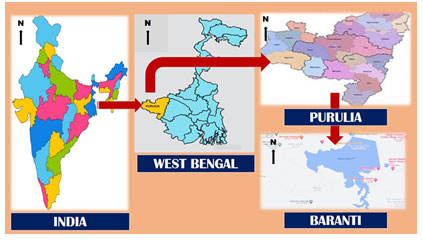
Figure 2: atellite view of Baranti, Purulia (source: https:
//www.google.com/maps/place/Purulia)

Primary data was collected through the survey that was carried out on 200 considered respondents on the basis of an ideal questionnaire format with a view to getting information and knowledge of the prospect of ecotourism in the area as well as the interest of the local people and other matters related to it.
Figure 3: Ambient air quality studied points at Baranti, Purulia
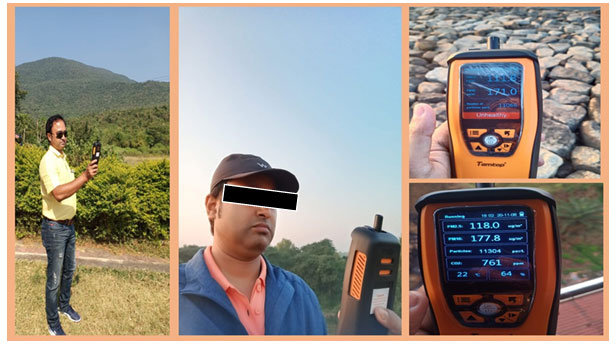
The secondary data was generated from the basic primary ones collected from the field study for statistical and explanatory analyses.
Table 1. Status of average ambient air in respect of Temperature, Humidity, PM 2.5, PM 10, Particles
and atmospheric CO2 at 6 spots of Baranti, Purulia during June 2020 to November 2020
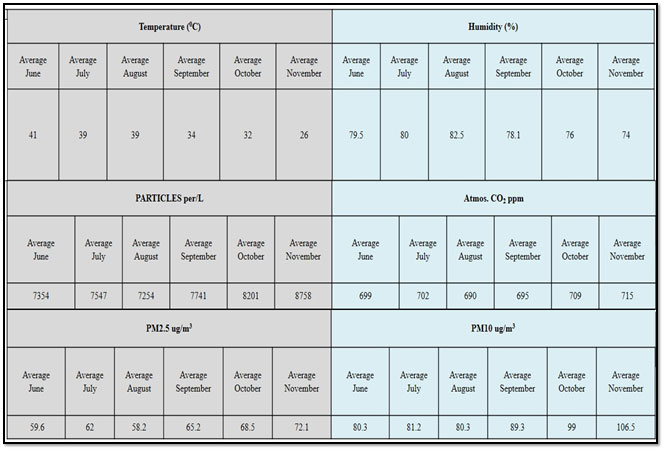
Figure 5
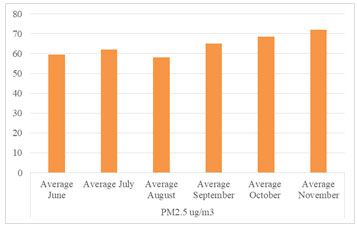
Figure 6

Figure 7

Figure 8
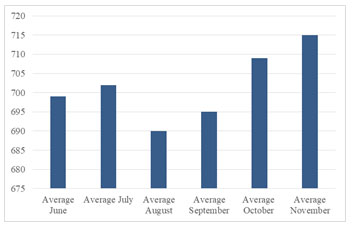
Figures 5, 6, 7 & 8: Bar graphs of PM 2.5, PM10, Particles and atmospheric CO2 respectively in
ambient air of Baranti, Purulia during June 2020 to November 2020
Table 2. During June 2020 to November 2020 average PM 2.5, PM 10 and atmospheric CO2 in
ambient air of Baranti, Purulia as compared to WHO Air quality guideline values
| Parameters | Ave. Baranti ambient air | WHO Air quality guideline values |
| PM 2.5 ug/m3 | 64.26 | 10 |
| PM10 ug/m3 | 89.43 | 20 |
| CO2 ppm | 701.66 | 400 |
Figure 9: Graph of average PM 2.5, PM 10 and atmospheric CO2 in ambient air of Baranti, Purulia
as compared to WHO Air quality guideline values during June 2020 to November 2020

Table 3. ANOVA: Single Factor shows average PM 2.5, PM 10 and atmospheric CO2 in ambient air of
Baranti, Purulia an compared to WHO Air quality guideline values during June 2020 to November 2020
| ANOVA | ||||||
| Source of Variation | SS | df | MS | F | P-value | F crit |
| Between Groups | 340218 | 2 | 170109.005 | 10.3343 | 0.04513 | 9.5520945 |
| Within Groups | 49381.7 | 3 | 16460.5714 | |||
| Total | 389600 | 5 | ||||
Table 3. shows F > F Crit, reject the null hypothesis. This is the case 10.3343 > 9.5520945. Therefore, reject the null hypothesis viz. Baranti ambient air and WHO air quality guideline values are not equal.
The ambient air quality in Baranti, Purulia was considered and it was found that the air quality here is moderate as well as unhealthy for the local people and tourists as compared to WHO Air quality guideline values (Table 1-3, Figure 5-9). Our study site is Baranti, a small village in the district of Purulia, West Bengal, India. It mainly consists of tribal people and people belonging to sub-altern class. A major portion of the people here earn their living by means of the Government Project ‘100 Days Job’.
Besides, some of them are engaged in biannual irrigation activities and they cultivate paddy and vegetables. Again, some others engage themselves in pisciculture in dam. Only a few of them are employed in Government or other sectors. Prior to 2010-2011, only 2 small guesthouses or farmhouses were there but they were not well known. From 2011 onwards, 40 resorts have been set up in the area and they are much in demand now.
Even the Govt. of West Bengal has built a resort here. Without booking in advance, it is very difficult to avail of these resorts, especially during the peak season for tourism. It actually explains the popularity of the spot. Local people are directly or indirectly dependent on tourism. They run and maintain the resorts and the tourists’ transport is also looked after by them. The local market and shops have been flourished by the tourists (Raha 2015; Paul and Ganguly 2021).
The Govt. of West Bengal too has improved the infrastructure of the area. The socio- economic condition of the area has also developed on a massive scale by dint of tourism. The local traditional folk culture has also been revamped by the tourists. Tribals’ handicraft etc. have also become popular. Local people demand for a well-equipped green park and greeneries at the site. They also demand that a circular road be set up surrounding the park and more improved transportation system be ensured as well as number of vehicles for tourists be increased. Last but not least they also demand that a Development Authority be set up for proper planning and execution of ecotourism promotion (Mishra 2019; Palit and Saren 2021).
Figure 10: The local traditional folk culture: Santali dance at Baranti, Purulia
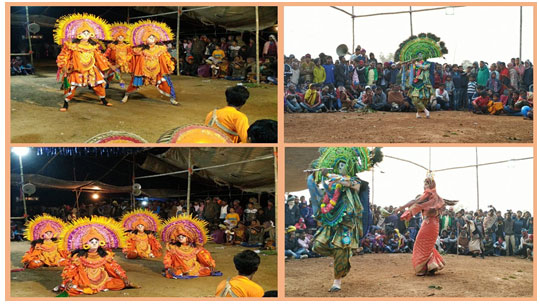
Figure 11: The local traditional folk culture: Chhau dance at Baranti, Purulia
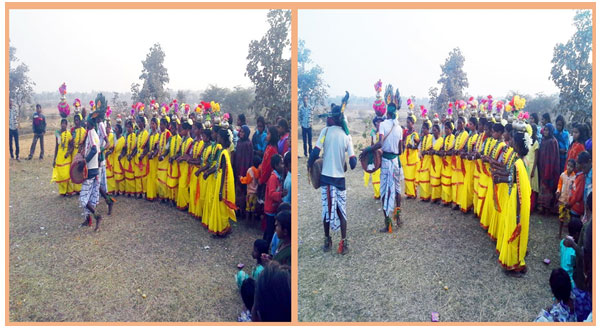
Figure 12: Display of Tribals’ handicraft to tourists for sale at Baranti, Purulia
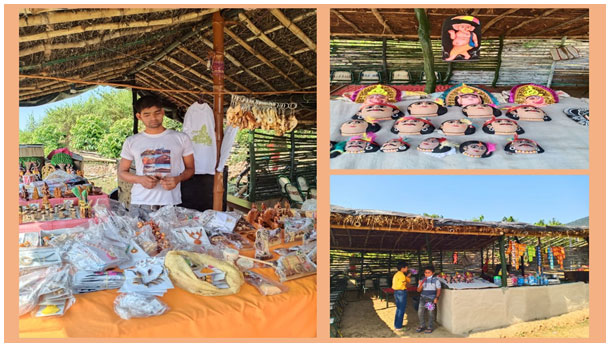
A comprehensive study was made during the last 6 months from May’20 to November’20. Unexpectedly it was noticed that the month wise average ambient air at the said side is contaminated in respect of PM 2.5, PM 10, Particles and CO2 parameters (Table 1-3; Figure 5-9). After analyses it was also found that the ambient air quality of the said study site is very much polluted as judged by the yardstick of Air Quality Guideline Levels laid down by the WHO (Table 2, Figure 9).
Tourism in Baranti has an enormous effect bearing on the socio-economic improvement of the district. Many important parameters are instrumental in the flourishing of the tourism industry in the past few years. Tourism business leads to job opportunities which help enhance income sources as well as approaches to greater education and access to better health for the local inhabitants. They do not require to migrate to other region in search of jobBut here the study revealed that air-pollution at an alarming rate appears to be a major cause of concern and a great threat to tourism (Mishra 2019; Banik and Mukhopadhyay 2020; Palit and Saren 2021).
Figure 13: Some attractive glimpses of Baranti, Purulia ecotourism spot
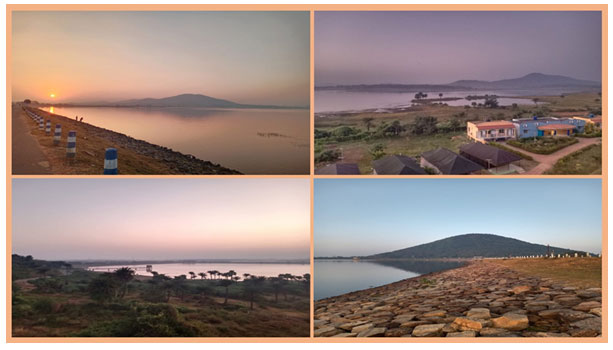
Tourism does not merely mean learning or knowing facts about various locations. It gives us access to the unique cultures and styles of living of others and leaves an indelible impression on one’s mind. The overall progress in tourism also influences the comprehensive growth of the region and also of the inhabitants. But in such a fast-growing ecotourism spot as Baranti situated in the midst of backward areas peopled by the Tribals, air pollution at an alarming rate is a veritable threat.
CONCLUSION
During the study, it was found that average PM 2.5, PM 10 & CO2 in ambient air in the study site were 64.26 ug/m3, 89.43 ug/m3 & 701.66 respectively therefore unexpectedly the ambient air is not only contaminated but also moderate to unhealthy in respect of the said parameters as judged by the yardstick of Air Quality Guideline Levels laid down by the WHO. A proper management planning for controlling and minimising the said pollution with the interference of the Government and other agencies is the need of the hour for ensuring sustainable development of the area and making it more eco-friendly that will help in boosting up the economic condition as well as folk-culture of the local people. The preservation of nature & its beauty and controlled contamination of the environment leads to the encouragement of tourism.
ACKNOWLEDGEMENTS
The authors are grateful to Head of the Department, Botany, The University of Burdwan, West Bengal, India for Laboratory facilities.
Conflict of Interests
The present study will make the local people, hotel-resort owners & staff, local businessmen and tourists, Government and other authorities / organisations aware of the ambient air pollution and in this context the authors do hereby declare that there is no conflict of interest with the above said categorised persons & authorities / organisation.
REFERENCES
Acott TG, Trobe HL, and Howard SH (1998) An evaluation of deep ecotourism and shallow ecotourism. Journal of sustainable tourism, 6 (3): 238-253.
Almetwally AA, Bin-Jumah M and Allam AA (2020) Ambient air pollution and its influence on human health and welfare: An overview. Environmental Science and Pollution Research, 27(20): 24815-24830.
Banik S and Mukhopadhyay M (2020) Model-based strategic planning for the development of community based tourism: a case study of Ayodhya Hills in West Bengal, India. GeoJournal, 1-17, https://doi.org/10.1007/s10708-020-10314-0.
Bhaya S and Chakrabarty A (2016) A GIS based eco-tourism potential site selection for promotion of tourism in Jungle Mahal of West Bengal. International journal of current research, 8(11): 41043- 41055.
Braithwaite I, Zhang S, Kirkbride JB, Osborn DP and Hayes JF (2019) Air pollution (particulate matter) exposure and associations with depression, anxiety, bipolar, psychosis and suicide risk: a systematic review and meta-analysis. Environmental health perspectives, 127(12):126002.
Chow AS, Cheng IN and Cheung LT (2019) Self-determined travel motivations and ecologically responsible attitudes of nature-based visitors to the Ramsar wetland in South China. Annals of Leisure Research, 22(1): 42-61.
Churchill SA, Pan L and Paramati SR (2020) Air Pollution and Tourism: Evidence from G20 Countries. Journal of Travel Research, 0047287520977724, https://doi.org/10.1177%2F0047287520977724.
Coupland H (1911) Bengal District Gazetteers: Manbhum, Calcutta, 2.
Dong D, Xu X, Yu H and Zhao Y (2019) The impact of air pollution on domestic tourism in China: a spatial econometric analysis. Sustainability, 11 (15): 4148
Fletcher R and Neves K (2012) Contradictions in tourism: The promise and pitfalls of ecotourism as a manifold capitalist fix. Environment and Society, 3 (1): 60-77.
Koondhar MA, Li H, Wang H, Bold S and Kong R (2020) Looking back over the past two decades on the nexus between air pollution, energy consumption, and agricultural productivity in China: a qualitative analysis based on the ARDL bounds testing model. Environmental Science and Pollution Research, 27: 13575–13589, https://doi.org/10.1007/s11356-019-07501-z.
Mahato NK (2010) Environment and Migration, Purulia, West Bengal. CRG Res Paper Ser Policies Pract, 30(2):1-15.
Manisalidis I, Stavropoulou E, Stavropoulos A and Bezirtzoglou E (2020) Environmental and health impacts of air pollution: a review. Frontiers in public health, 8 (14), 10.3389/fpubh.2020.00014.
Mishra M (2019) Examining the prospect of sustainable eco and rural tourism in Purulia district of West Bengal. Ensemble, 1(1): 41-48.
Nataraja TC, Manjunath G and Venkatesh R (2014) Eco-tourism in Karnataka In National Seminar on Issues, Challenges and Opportunities in Horticulture Tourism and Information. Technology in India, 1-12.
Palit S and Saren UKPM (2021) Perception of tourism on the socio-economic improvement of Purulia: A case study from the Ajyodha Hills, Purulia, West Bengal, India. Psychology and Education, 58(3): 3483-3496.
Patra UK, Khan KR, Gayak J and Hembram R (2019). Population growth in Purulia district of West Bengal: a geographical analysis. International Journal of Research in Social Sciences, 9(2): 489- 499.
Patra UK, Mondal P and Hembram R (2018) Tourism potentiality in a plateau region: A case study on Purulia district, West Bengal. Review of Research, 8(2):1- 10.
Paul B and Ganguly R (2021) Interface between Tribes and Ecotourism: A Study on Sustainability and Development in Purulia, West Bengal Environment. Development and Sustainability in India: Perspectives issues and alternatives, Springer, 01-311.
Payne-Sturges DC, Marty MA, Perera F, Miller MD, Swanson M, Ellickson K, Cory-Slechta DA, Ritz B, Balmes J, Anderko L and Talbott EO (2019) Healthy air, healthy brains: advancing air pollution policy to protect children’s health. American journal of public health, 109(4): 550-554.
Raha S (2015) Paper on tourism potential in Raghunathpur Circuit, Purulia district. International Journal of Physical and Social Sciences, 5(6): 316-339.
Raha S and Gayen SK (2021) Drought-Induced Human Mobility in Purulia District of West Bengal. In Habitat, Ecology and Ekistics, Springer, 263-277.
Ramyar M and Halim N (2020) Tourist Expectation and Satisfaction towards Existing Infrastructure and Facilities in Golestan National Park, Iran. American Research Journal of Humanities & Social Science (ARJHSS), 03 (07): 89-108.
Striphas T (2019) Caring for cultural studies. Taylor & Francis Online, 33(1): 1-18, https://doi.org/10.1080/09502386.2018.1543716.
Sun Z and Zhu D (2019) Exposure to outdoor air pollution and its human health outcomes: A scoping review. PloS one, 14(5): 0216550.
Tang J, Yuan X, Ramos V and Sriboonchitta S (2019) Does air pollution decrease inbound tourist arrivals? The case of Beijing. Asia Pacific Journal of Tourism Research, 24 (6): 597-605.
WHO Regional Office for Europe (2013) Review of evidence on health aspects of air pollution–REVIHAAP project: Technical Report [Internet] Copenhagen. National Library of Medicine National Centre for Biotechnology Information.
Yang Z, Song Q., Li J, Zhang Y, Yuan XC, Wang W and Yu Q (2021) Air pollution and mental health: the moderator effect of health behaviours. Environmental Research Letters, 16(4), 044005.
Zhou X, Santana Jiménez Y, Pérez Rodríguez JV and Hernández JM (2019) Air pollution and tourism demand: A case study of Beijing, China. International Journal of Tourism Research, 1(6): 747-757.


